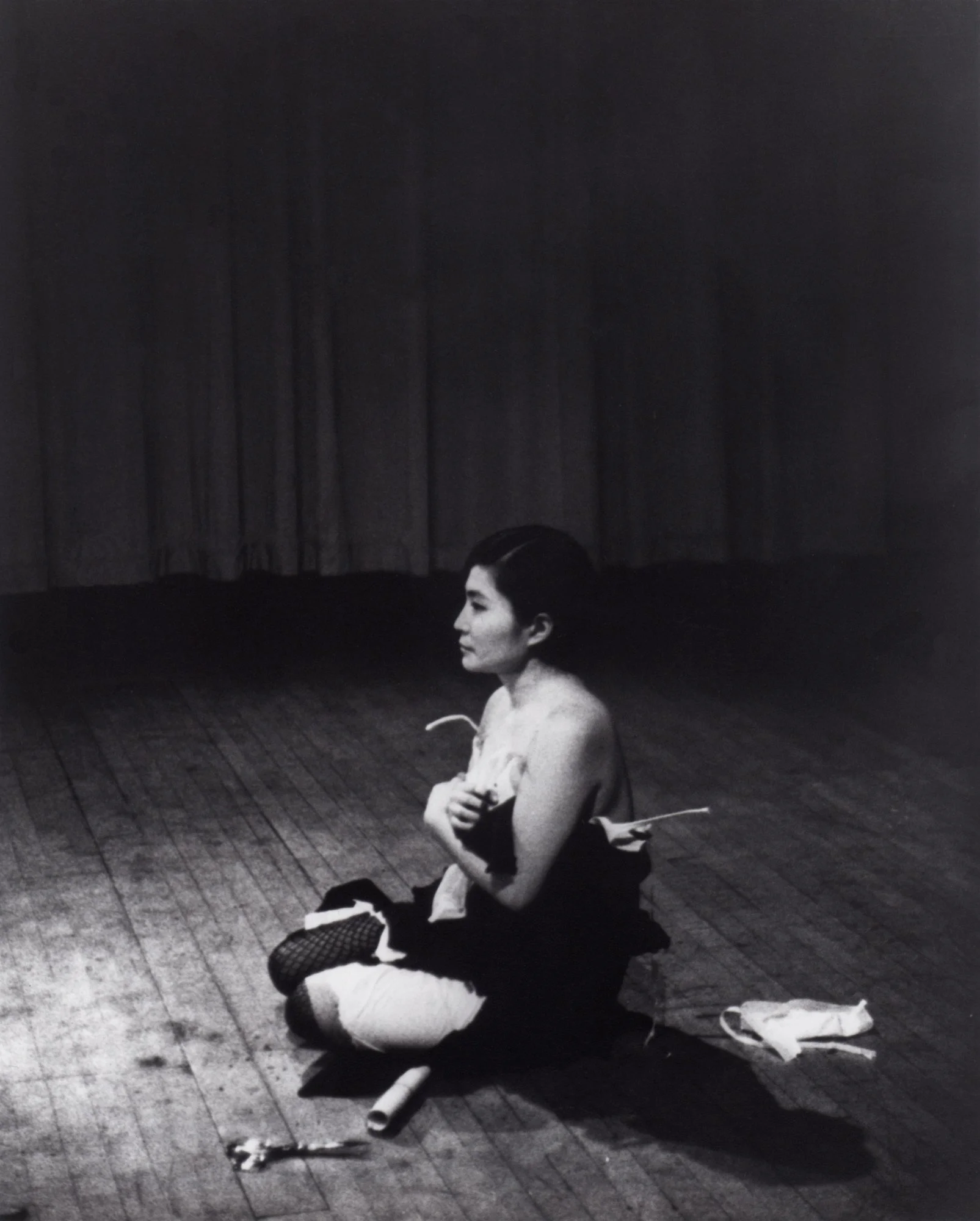A new type of performance art with the blockchain as stage, by 0xG
Blockchain technology is mostly known for its role in cryptocurrencies (like Bitcoin and Ethereum), enabling world-wide decentralized financial transactions. Beyond that, it’s widely associated with NFTs (non-fungible tokens) in digital assets or art, smart contracts in decentralized finance (DeFi), and supply chain transparency. However, blockchain technology can also be used as a medium for art. How? To program it to do something (or behave) in a certain way depending on the given instructions, variables and state of the chain, letting it be the stage of a new type of performance art – a concept which has evolved significantly since its emergence in the 1960s.
Operating at this experimental perimeter is 0xG, a creator whose practice lingers between technical innovation and conceptual art. With a focus on programmable, dynamic projects that respond to and interact with their collectors, they are redefining how the blockchain can be put to work, what art can be in this liminal space and how digital tokens can behave.
0xG {} on-chain experimenter and conceptual coder
0xG’s work defies easy categorization. Not looking to be bound by traditional definitions of art, 0xG approaches the blockchain as both a medium and a playground – an open system for exploration, experimentation, and invention.
Their creations are often starkly minimalist visuals with a complex, self-referential concept that interrogates the crypto ecosystem itself. Smart contracts – self-executing programs running on the blockchain – are their primary tool for these critical works, allowing 0xG to build dynamic, autonomous pieces that evolve over time or respond to external conditions. These custom-made contracts allow for interaction, evolution, and even subversion.
When being asked if what they do is art, 0xG replies: “I actually don’t know, I’m just playing around with the blockchain.” Yet this playful approach of the technology, and issuing NFT-projects from it, is what makes us to (re)consider the boundaries of art. Because, what happens when the “canvas” is an immutable, decentralized network? What part is the artwork when code is the medium? Rather than adhering to conventional artistic frameworks, 0xG is driven by this curiosity. What can a blockchain do beyond transactions and data storage? “What aesthetic and conceptual possibilities emerge when I inscribe a certain happening on the chain?,” they say.
0xG — Fearless
Fearless: a performance on the blockchain
0xG’s piece Fearless (September 2022) is a benchmark example of how blockchain can become a stage for performance art. The idea is that it would cost 300 Ethereum (ETH) - around $500,000 at the time - to acquire it for free. This meant that the collector ‘only’ needed to have this extraordinary amount in their crypto wallet to be able to mint the piece, but didn’t actually pay that amount.
Since 0xG received none of the 300 ETH, Fearless was never about financial gain – it was about the act itself, both on-chain and through the collector’s participation. The exorbitant price wasn’t incidental; it was integral to the work. With Fearless, 0xG wanted to interrogate the relationship between value and relevance, highlighting how perception of worth is often shaped by spectacle. “Without the price tag, no one would have noticed this work,” 0xG explains, “but then the paradox was flipped and it actually didn’t cost anything.”
To have that amount of ETH in a wallet and trust that the smart contract wouldn’t drain it entirely required a significant leap of faith. Ultimately, the piece only came into existence because a collector minted it – which was by the way just two minutes after the announcement – proofing their 300 ETH balance before receiving the NFT in return. In essence, this was a blockchain happening – a fleeting event, unfolding in real-time, where the blockchain itself served as the medium, the witness, ánd the notary.
From an art-historical perspective, Fearless mirrors many of the dynamics seen in performance art since its inception. 0xG placed the onus on the collector to complete the piece. The act of minting became a performance, now written and stored on the very blockchain it used, and where the collector played a necessary role.
Fearless therefore exemplifies how blockchain can be used beyond utility, to become a tool for artistic experimentation in itself. For those steeped in art history but unfamiliar with blockchain, 0xG’s work offers an invitation to explore a new medium – one where code converges to initiate a digital performance.
Performance art, from then to now
Performance art emerged as a radical departure from traditional mediums, rejecting the static nature of painting and sculpture in favor of live, ephemeral experiences. While its roots can be traced back to early 20th-century avant-garde movements – Dada, Futurism, Surrealism – it wasn't until the 1960s and 70s that it solidified as a distinct artistic practice, with artists using their bodies, actions, and environments as their primary tools.
This movement saw artists prioritizing process over product, engaging with political and social issues in real time. The art resided not in an object but in an event – a fleeting (provocative) interaction or moment. This form of art is ephemeral, existing first and foremost in the moment of its execution. After that it resides in the written, photographed, and/or filmed registration – besides the personal experiences of the audience (that are foretold). Engaging with the audience is one of the defining characteristics of performance art. Some performances relegated the audience to passive observers, but others invited – or sometimes basically pushed – them into participatory, and possibly uncomfortable, roles.
One of the earliest and most iconic examples of audience participation in performance art is Yoko Ono’s Cut Piece. For this work, she sat motionless on a stage while audience members were invited to come up one by one and cut away pieces of her clothing with a pair of scissors. Without the audience, the work wouldn’t exist because the performance didn’t happen otherwise. Same goes for Rhythm 0 by Marina Abramović, during which she stood passively for six hours beside a table with 72 objects, ranging from a rose and honey to scissors, chains, a knife, and a loaded gun. Audience members were told they could use these objects on her however they pleased.
Yoko Ono. Cut Piece (1964) performed by Yoko Ono in New Works of Yoko Ono,
Carnegie Recital Hall, New York, March 21, 1965.
Photo: Minoru Niizuma. Courtesy of Yoko Ono. www.moma.org
Another key example where the audience played a central role in shaping the artwork itself is the oeuvre of Alan Kaprow. His Happenings were unscripted, interactive events in which the audience became active participants rather than spectators. There was no distinction between artist and audience – everyone present was part of the work. These performances took place in unconventional locations (warehouses, streets, parks) and often involved elements of chance and improvisation.
As performance art evolved through the late 20th and early 21st centuries, artists like Rafael Lozano-Hemmer, Stelarc and Hito Steyerl began to incorporate technology as a means of deepening audience engagement. The shift from live, corporeal performances to technologically mediated and embedded interactions gave new forms of participation. Digital platforms, real-time data processing, artificial intelligence, and networked communication transformed the performance space into something more fluid and responsive on a global scale.
So, while the early performance artists emphasized physical presence, contemporary artists like 0xG have extended their performances into virtual and interactive worlds. Enter the blockchain. With his smart contracts, 0xG brings the ethos of performance art to the digital age. Their works transform the chain into a stage, where interaction and temporality play out in real time. Like the early pioneers of performance art, 0xG uses their medium to provoke, question, and engage.
Expanding the medium: blockchain as performance space
Three reasons why blockchain’s characteristics make it a valuable engine for performance art:
1) Immutability.
The actions recorded on the blockchain are permanent, creating a lasting trace of the performance.
2) Interactivity.
Smart contracts allow for dynamic engagement to make the audience’s participation integral to the artwork.
3) Scarcity.
Programmable scarcity mirrors themes explored in traditional art markets but subverts them in innovative ways.
In Fearless, these elements converge: the performance isn’t merely the act of minting but the entire lifecycle of the artwork: the spectacle of the initial price, the subsequent redistribution, and the conversations it sparked. This dynamic is also echoed in other works by 0xG, such as:
0xG — Perpetual
Perpetual
For this work, 0xG built a system where acquiring a new edition requires the destruction of an unlocked piece from a previous edition within the same collection. With each burning event, the supply contracts. Once a token is burned, it is permanently removed from circulation, leaving behind only a record of its past existence. Over time, as more collectors engage in this ritual of exchange, a Perpetual collection could ultimately distill itself into a series of 1/1s.
“For me, this wasn’t just a technical piece but also a way to reflect on how digital art as NFTs exists in a speculative, future-driven space, often overlooking the present moment and the artwork for what it is,” 0xG explains. “Especially when we look at editions: if we play this game of perpetual reduction (or transformation, rather), it makes us question the value of the artwork itself. And really, if each piece is destined to be replaced, was having multiple editions necessary in the first place? But I was also fascinated by the idea of an endless work, perpetually changing.”
The ‘burn-to-redeem’ mechanism is widely used in blockchain art today, but when 0xG introduced Perpetual, it was an early and elegant take on the concept. By embedding choice, sacrifice, and transformation into the structure of ownership, the work resists finality – every action shifts the collection’s composition, yet no single collector has full control over its trajectory. Perpetual plays with the tension between permanence and impermanence: while burn events and transactions are recorded immutably, the artwork itself remains in flux, shaped by participation rather than preservation.
0xG — N.
N.
N. operates as a conceptual critique of NFT standards, treating blockchain interactions themselves as the primary material of the artwork. At its core, N. is an infinite edition with temporary ownership – each new mint erases the previous owner’s token, creating a system where permanence is an illusion. While the blockchain’s transaction history cannot be altered, 0xG has turned its data structure against itself, using smart contract manipulation to simulate an endless cycle of disappearance. The contract remembers past ownership but erases the asset itself, reducing the collector’s presence to an almost invisible mark: what’s left is an NFT stripped of visual and economic incentives. In effect, N. transforms blockchain's ledger of ownership into a record of erasure, where the only proof of possession is the black void left behind.
Conclusion
0xG translates the fleeting nature of performance art into the digital space. Performance art has always been about pushing boundaries and questioning norms, and 0xG’s projects do just that. Fearless forces us to confront what we value in art. Is it the object (in this case the NFT) itself? The story it tells? The price tag it has? The risks that it demands to obtain it or interact with it? By embedding these concepts into his blockchain projects, through letting the art being acted upon and acting in itself, the artworks go beyond an existence of ‘something to enjoy’. The collector’s decisions, the public’s reactions, and the coded parameters of the work all become part of the pieces, defining their states. 0xG’s work therefore engages with themes central to art history, like the role of the audience and the commodification of art. Just as Kaprow invited audiences to co-create his Happenings, 0xG involves collectors in the execution and evolution of their possessions. This democratization of participation is a hallmark of performance art, reimagined by 0xG for a decentralized digital age.



